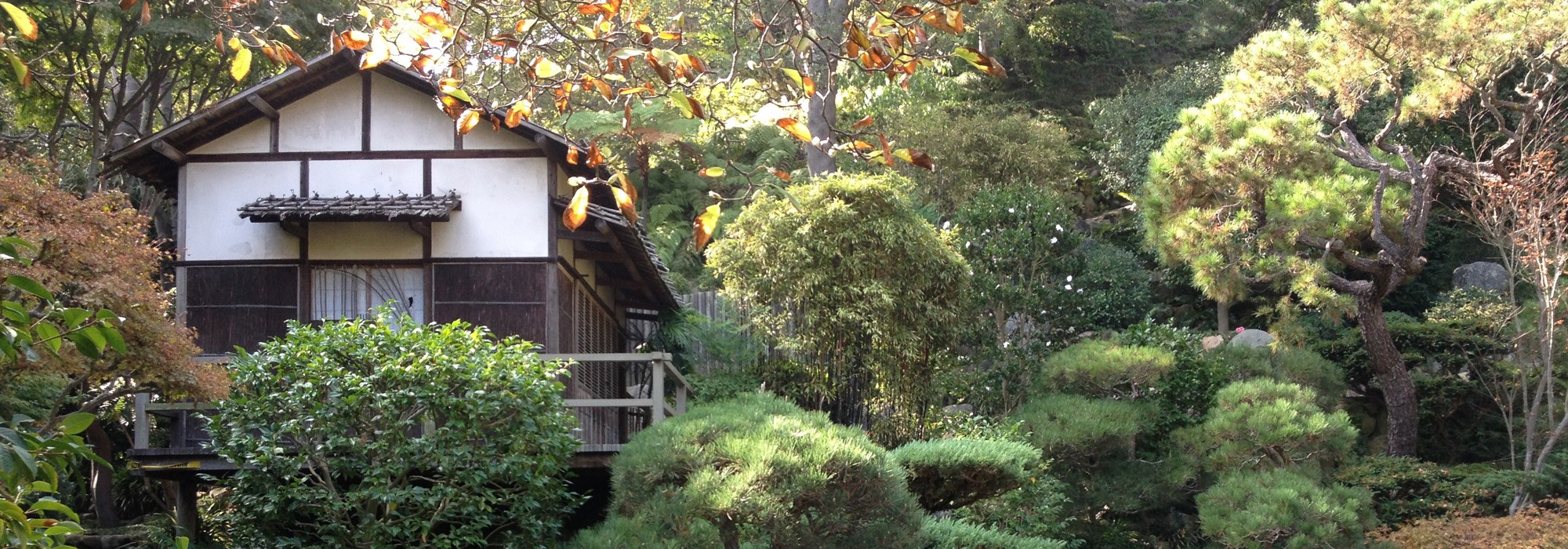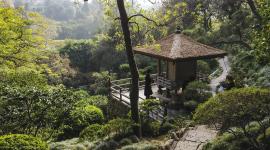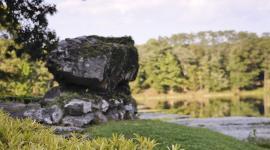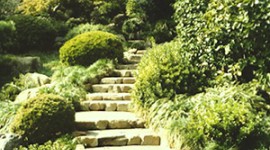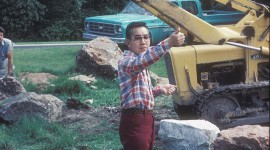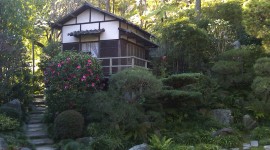Landslide Update: Hannah Carter Japanese Garden
One of the most important postwar Japanese-style gardens in the Unites States is part of an estate in Los Angeles that was recently listed for sale for $39 million. Tucked between the legendary Bel-Air Country Club and Bel-Air Hotel, this private residence, first developed in the 1920s for Henry Calendar, includes a seven-bedroom Neoclassical mansion built in 1938. The garden, designed by Nagao Sakurai and Kazuo Nakamura in 1959, and residence were declared a Los Angeles Historic-Cultural Monument in 2017.

Here’s a brief history of the garden. In 1959, the property was purchased by Gordon Guiberson, who commissioned Sakurai and Nakamura to transform the estate’s earlier Hawaiian-inspired landscape by A.E. Hanson into a Japanese garden.
The new plan kept intact elements from Hanson’s design, including a Hawaiian garden, a twenty-foot waterfall, and a stone bathhouse. From the entry at the base of the hill, stone paths lead up to a central koi pond edged by a black pebble beach. Circular stepping stones and stone bridges provide passage across the water, with a stone pagoda positioned at the bottom edge of the pond and a Japanese teahouse overlooking the water from its western side. Dense plantings, many with Japanese origins, surround the pond, including pines, bamboo, magnolia, and camellia trees. At the garden’s highest point sits the hokura (family shrine), which contains a hand-carved gilt Buddha. The entry gate, hokura, and tea house were imported from Japan, along with stone lanterns, water basins, and carved and natural stones with symbolic significance that line the paths.
In 1964, businessman Edward Carter gifted the estate to his alma mater, the University of California, Los Angeles (UCLA), with the understanding that the university would steward the garden. Five years later, campus architect and professor Koichi Kawana oversaw the garden’s reconstruction after extensive flooding and mudslides.
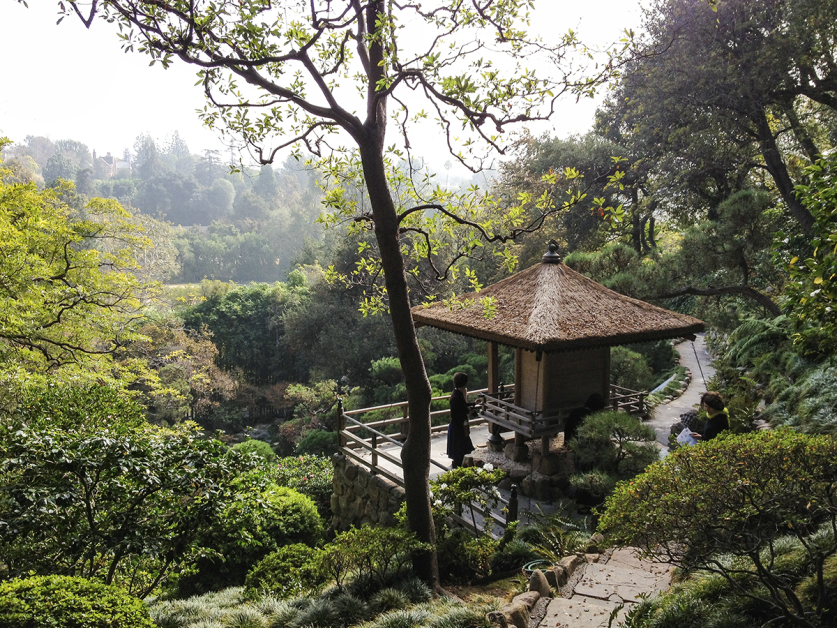
In 1982, Mr. Carter, a former chairman of the Board of Regents, and a University of California Regent for 36 years, amended the terms of his donation to name the garden in honor of his wife Hannah and, most significantly, to require the university to "retain the garden portion in perpetuity." Mr. Carter also said his the house, part of the original 1964 bequest, could eventually be sold to provide an endowment to maintain the garden and provide funding for other purposes. In 1999, the university reaffirmed its commitment to the terms to “maintain the garden portion in perpetuity” along with the rest of the bequest.
In 2010, a year after her death, UCLA, without notifying Hannah Carter's children, persuaded a Superior Court judge to overturn the "in perpetuity" terms of the bequest and in March 2012 listed both the house and the garden for sale. A coalition that included The Cultural Landscape Foundation (TCLF), several Carter heirs, the Los Angeles Conservancy, and other groups, strenuously advocated for the garden’s protection; TCLF also enrolled the garden as a Landslide threatened site in 2012 and included it in the thematic digital report and exhibition Landscape and Patronage. On July 27, 2012, a Los Angeles County Superior Court judge issued a temporary injunction delaying the sale of the garden and upholding UCLA’s legal obligation to maintain it. The university ultimately reached an agreement, in October 2015, with the Carter heirs, which permitted the sale of the garden to developer Mark Gabay in June 2016 for $12.5 million, less than one-third of the current asking price, on condition that the owner maintain and preserve it for 30 years. Those conditions will soon be put to the test again as the estate acquires new ownership.



